 Java
Java javaTutorial
javaTutorial How to handle the exception when the temporary target of SpringBoot file upload is deleted
How to handle the exception when the temporary target of SpringBoot file upload is deleted1. Business background
We used Spring Cloud for project development, and one of the main services (involving image uploading), the SpringBoot microservice, was in the test environment. Because this project has already been launched, no relevant changes or packaging have been made for this project for a long time.
Due to the recent need for Party A to add some new functions to this project. However, when uploading the course during the test, the course cover needs to be uploaded, and I found that the image upload interface for uploading the course cover reported an error of 500.
I cannot find the error message in the backend log directory. Only the front-end with separate front-end and back-end returns the following error message when calling the interface
Could not parse multipart servlet request;
nested exception is java.io.IOException:
The temporary upload location [/tmp/tomcat/ocalhost/ROOT] is not valid
Finally, I searched according to the error prompt and found that the temporary directory of tomcat was deleted. Finally, I found an article that explained the following points more clearly:
(1). After the SpringBoot project is started, the system will automatically create the following three directories in the /tmp directory by default
hsperfdata_root,
tomcat.************.8080, (the end is the end of the project)
tomcat-docbase.************.8080
##(2), Multipart (form- data), the default is to create a temporary file in the second directory
(3). CentOS7 regularly cleans the temporary file directory
The cleaning rules of the /tmp directory mainly depend on the settings of the /usr/lib/tmpfiles.d/tmp.conf file. The default configuration content is:# Clear tmp directories separately, to make them easier to override v /tmp 1777 root root 10d # 清理/tmp下10天前的目录和文件 v /var/tmp 1777 root root 30d # 清理/var/tmp下30天前的目录和文件Based on the above conditions, it can be seen that The temporary directory where we upload files will be cleaned regularly every 10 days in CentOS7. So there was a problem that the temporary directory where the uploaded files appeared at the beginning of the article did not exist, so the upload problem reported an error 500. My colleague said something about starting a certain microservice and specifically said that it is enough to start the gateway service. Having said that, starting any SpringBoot microservice can achieve uploading (because starting any local microservice will generate a corresponding temporary directory). Finally, a microservice was started, and the results could indeed be uploaded. I don’t want to just try to solve the problem as soon as the problem is solved. Finally, based on the searched articles and analysis, I personally think there are the following three solutions. 2. Three solutions2.1. Directly modify the CentOS clean-up temporary directory rules Directly specify all temporary directories by force, and refine management for uploaded files The tomcat directory is not cleared. The cleaning rules of the /tmp directory mainly depend on the settings of the /usr/lib/tmpfiles.d/tmp.conf file: We can configure this file, for example, you do not want the system to automatically To clean up the directory starting with tomcat under /tmp, then add the following content to the configuration file:
x /tmp/tomcat.*2.2. Specify your own upload file directory through SpringBoot startup configuration annotation (@Configuration)
Change the storage path of temporary files and specify a custom non-CentOS7 system default temporary directory, so as to avoid the system clearing the temporary directory regularly. The implementation code is as follows
@Configuration
public class MultipartConfig {
/**
* 文件上传临时路径
*/
@Bean
MultipartConfigElement multipartConfigElement() {
MultipartConfigFactory factory = new MultipartConfigFactory();
String location = System.getProperty("user.dir") + "/data/upload/tmp";
File tmpFile = new File(location);
if (!tmpFile.exists()) {
tmpFile.mkdirs();
}
factory.setLocation(location);
return factory.createMultipartConfig();
}
}2.3. The principle is similar to the second solution, but the Profile information is set in the SpringBoot configurationConfigure in the properties/yaml file: spring.http.multipart. location= Your cache file pathspring.mvc.static-path-pattern=/upload/** spring.http.multipart.max-file-size=10MB #指定上传文件临时目录 spring.http.multipart.location=/opt/data/upload3. Results display

 ##4. Summary
##4. Summary
When we encounter a problem, we may only see that the problem has been solved on the surface. But as a technology, we should delve into what causes it. I am also very grateful to the Internet, which allows many great experts to share the problems and solutions they have discovered. At the same time, the principles are also explained, which will help solve the problem from the root cause.
Problems and solutions encountered in SpringBoot file upload
1: Code error
Could not parse multipart servlet request; nested exception is java.io .IOException: The temporary upload location [D:xyqbtestworkTomcatlocalhostxyqb fsmarvels-core-v2] is not validSolution:
There is no temporary directory for uploading files in springboot, so the above report will be reported Error, you need to specify the temporary file directory in the application configuration file
server.tomcat.basedir=file path
If spring.http.multipart.location=file path is configured, you need to add this path.
Create a class that contains the following methods:
@Bean
public MultipartConfigElement multipartConfigElement() {
MultipartConfigFactory factory = new MultipartConfigFactory();
factory.setLocation("./tmp");
return factory.createMultipartConfig();
}It will take effect after restarting.
2: Code error
Failed to convert value of type "org.springframework.web.multipart.support.StandardMultipartHttpServletRequest$StandardMultipartFile" to required type "org.springframework.web.multipart.commons .CommonsMultipartFile"; nested exception is java.lang.IllegalStateException: Cannot convert value of type "org.springframework.web.multipart.support.StandardMultipartHttpServletRequest$StandardMultipartFile" to required type "org.springframework.web.multipart.commons.CommonsMultipartFile": no matching editors or conversion strategy found
Solution:
CommonsMultipartFile is used to receive files in springmvc, and MultipartFile is used in springboot.
Replace it and it will be successful.
The above is the detailed content of How to handle the exception when the temporary target of SpringBoot file upload is deleted. For more information, please follow other related articles on the PHP Chinese website!
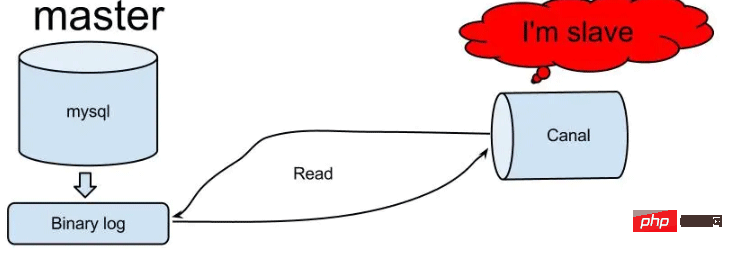 怎么使用SpringBoot+Canal实现数据库实时监控May 10, 2023 pm 06:25 PM
怎么使用SpringBoot+Canal实现数据库实时监控May 10, 2023 pm 06:25 PMCanal工作原理Canal模拟MySQLslave的交互协议,伪装自己为MySQLslave,向MySQLmaster发送dump协议MySQLmaster收到dump请求,开始推送binarylog给slave(也就是Canal)Canal解析binarylog对象(原始为byte流)MySQL打开binlog模式在MySQL配置文件my.cnf设置如下信息:[mysqld]#打开binloglog-bin=mysql-bin#选择ROW(行)模式binlog-format=ROW#配置My
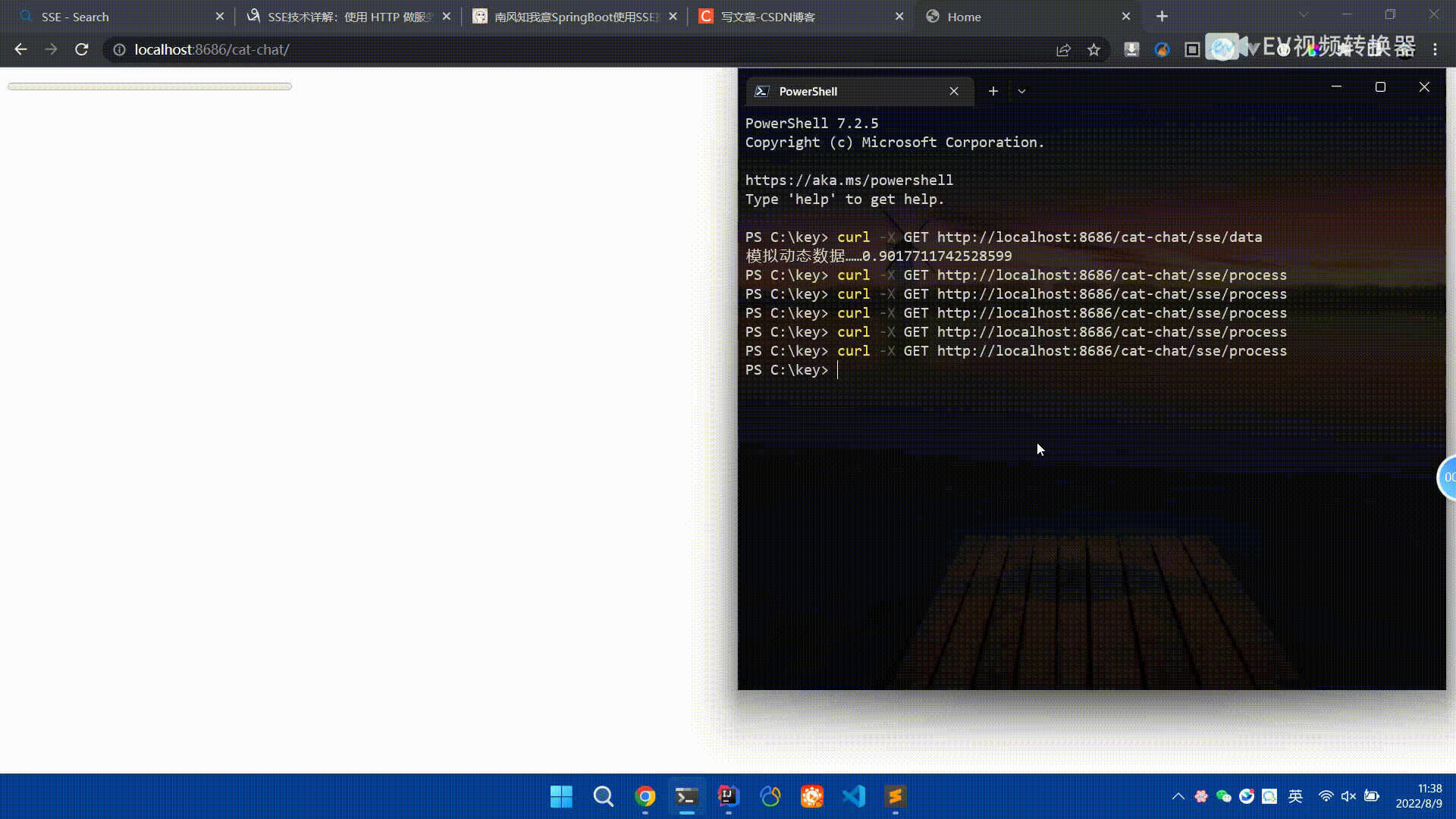 Spring Boot怎么使用SSE方式向前端推送数据May 10, 2023 pm 05:31 PM
Spring Boot怎么使用SSE方式向前端推送数据May 10, 2023 pm 05:31 PM前言SSE简单的来说就是服务器主动向前端推送数据的一种技术,它是单向的,也就是说前端是不能向服务器发送数据的。SSE适用于消息推送,监控等只需要服务器推送数据的场景中,下面是使用SpringBoot来实现一个简单的模拟向前端推动进度数据,前端页面接受后展示进度条。服务端在SpringBoot中使用时需要注意,最好使用SpringWeb提供的SseEmitter这个类来进行操作,我在刚开始时使用网上说的将Content-Type设置为text-stream这种方式发现每次前端每次都会重新创建接。最
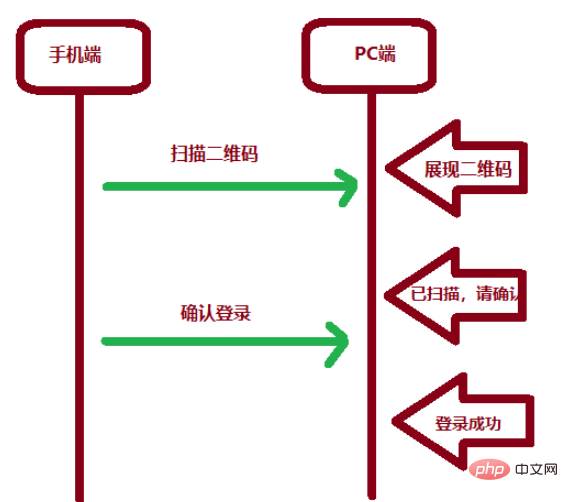 SpringBoot怎么实现二维码扫码登录May 10, 2023 pm 08:25 PM
SpringBoot怎么实现二维码扫码登录May 10, 2023 pm 08:25 PM一、手机扫二维码登录的原理二维码扫码登录是一种基于OAuth3.0协议的授权登录方式。在这种方式下,应用程序不需要获取用户的用户名和密码,只需要获取用户的授权即可。二维码扫码登录主要有以下几个步骤:应用程序生成一个二维码,并将该二维码展示给用户。用户使用扫码工具扫描该二维码,并在授权页面中授权。用户授权后,应用程序会获取一个授权码。应用程序使用该授权码向授权服务器请求访问令牌。授权服务器返回一个访问令牌给应用程序。应用程序使用该访问令牌访问资源服务器。通过以上步骤,二维码扫码登录可以实现用户的快
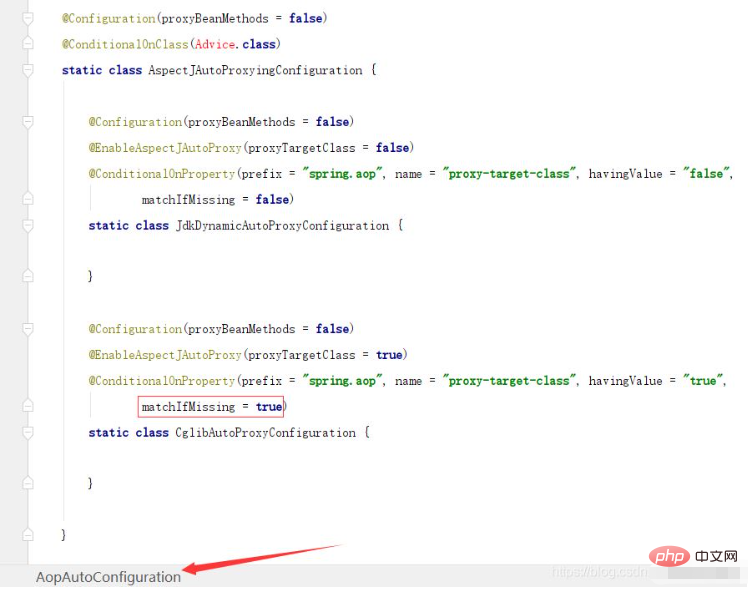 SpringBoot/Spring AOP默认动态代理方式是什么May 10, 2023 pm 03:52 PM
SpringBoot/Spring AOP默认动态代理方式是什么May 10, 2023 pm 03:52 PM1.springboot2.x及以上版本在SpringBoot2.xAOP中会默认使用Cglib来实现,但是Spring5中默认还是使用jdk动态代理。SpringAOP默认使用JDK动态代理,如果对象没有实现接口,则使用CGLIB代理。当然,也可以强制使用CGLIB代理。在SpringBoot中,通过AopAutoConfiguration来自动装配AOP.2.Springboot1.xSpringboot1.xAOP默认还是使用JDK动态代理的3.SpringBoot2.x为何默认使用Cgl
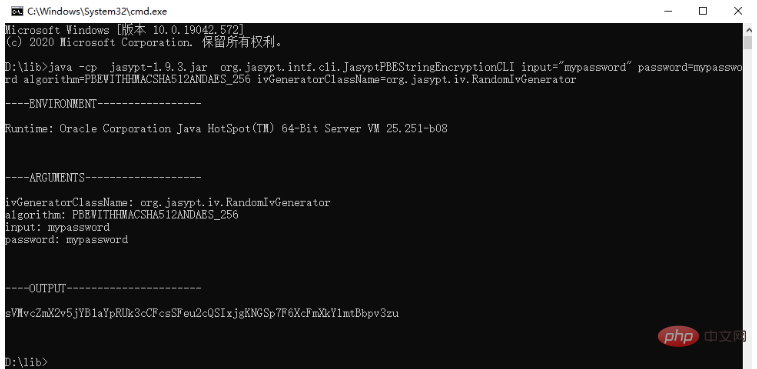 spring boot怎么对敏感信息进行加解密May 10, 2023 pm 02:46 PM
spring boot怎么对敏感信息进行加解密May 10, 2023 pm 02:46 PM我们使用jasypt最新版本对敏感信息进行加解密。1.在项目pom文件中加入如下依赖:com.github.ulisesbocchiojasypt-spring-boot-starter3.0.32.创建加解密公用类:packagecom.myproject.common.utils;importorg.jasypt.encryption.pbe.PooledPBEStringEncryptor;importorg.jasypt.encryption.pbe.config.SimpleStrin
 使用Java SpringBoot集成POI实现Word文档导出Apr 21, 2023 pm 12:19 PM
使用Java SpringBoot集成POI实现Word文档导出Apr 21, 2023 pm 12:19 PM知识准备需要理解ApachePOI遵循的标准(OfficeOpenXML(OOXML)标准和微软的OLE2复合文档格式(OLE2)),这将对应着API的依赖包。什么是POIApachePOI是用Java编写的免费开源的跨平台的JavaAPI,ApachePOI提供API给Java程序对MicrosoftOffice格式档案读和写的功能。POI为“PoorObfuscationImplementation”的首字母缩写,意为“简洁版的模糊实现”。ApachePOI是创建和维护操作各种符合Offic
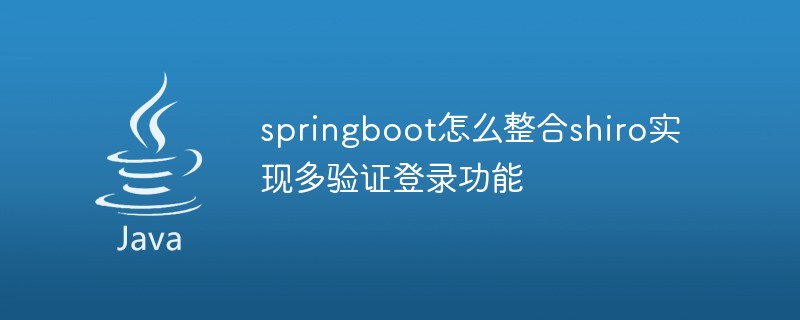 springboot怎么整合shiro实现多验证登录功能May 10, 2023 pm 04:19 PM
springboot怎么整合shiro实现多验证登录功能May 10, 2023 pm 04:19 PM1.首先新建一个shiroConfigshiro的配置类,代码如下:@ConfigurationpublicclassSpringShiroConfig{/***@paramrealms这儿使用接口集合是为了实现多验证登录时使用的*@return*/@BeanpublicSecurityManagersecurityManager(Collectionrealms){DefaultWebSecurityManagersManager=newDefaultWebSecurityManager();
 SpringBoot项目打包发布到外部tomcat遇到的问题怎么解决May 10, 2023 pm 05:49 PM
SpringBoot项目打包发布到外部tomcat遇到的问题怎么解决May 10, 2023 pm 05:49 PM先说遇到问题的情景:初次尝试使用springboot框架写了个小web项目,在IntellijIDEA中能正常启动运行。使用maven运行install,生成war包,发布到本机的tomcat下,出现异常,主要的异常信息是.......LifeCycleException。经各种搜索,找到答案。springboot因为内嵌tomcat容器,所以可以通过打包为jar包的方法将项目发布,但是如何将springboot项目打包成可发布到tomcat中的war包项目呢?1.既然需要打包成war包项目,首


Hot AI Tools

Undresser.AI Undress
AI-powered app for creating realistic nude photos

AI Clothes Remover
Online AI tool for removing clothes from photos.

Undress AI Tool
Undress images for free

Clothoff.io
AI clothes remover

AI Hentai Generator
Generate AI Hentai for free.

Hot Article

Hot Tools

VSCode Windows 64-bit Download
A free and powerful IDE editor launched by Microsoft

SublimeText3 Mac version
God-level code editing software (SublimeText3)

Zend Studio 13.0.1
Powerful PHP integrated development environment

mPDF
mPDF is a PHP library that can generate PDF files from UTF-8 encoded HTML. The original author, Ian Back, wrote mPDF to output PDF files "on the fly" from his website and handle different languages. It is slower than original scripts like HTML2FPDF and produces larger files when using Unicode fonts, but supports CSS styles etc. and has a lot of enhancements. Supports almost all languages, including RTL (Arabic and Hebrew) and CJK (Chinese, Japanese and Korean). Supports nested block-level elements (such as P, DIV),

SAP NetWeaver Server Adapter for Eclipse
Integrate Eclipse with SAP NetWeaver application server.






